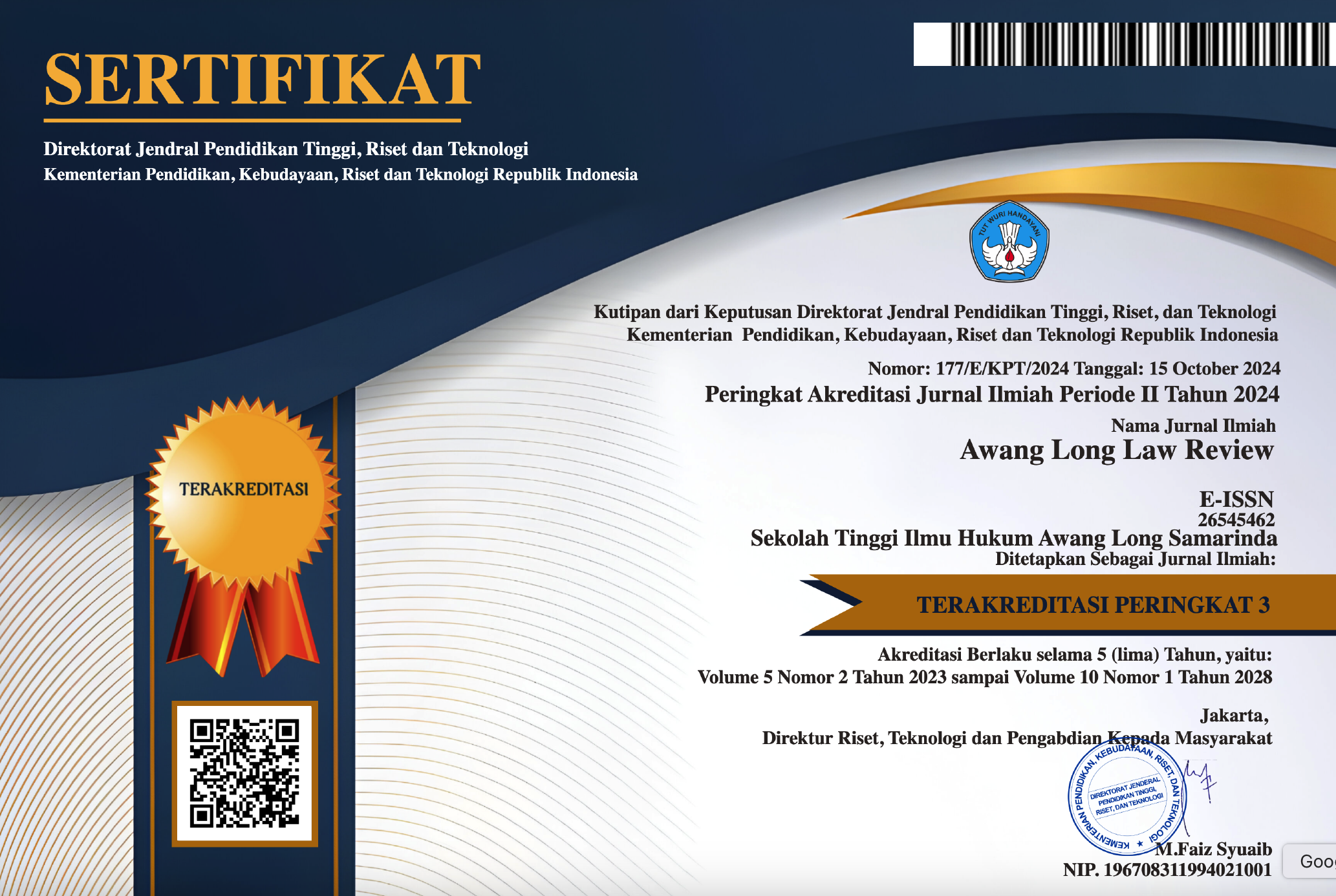PROTECTION OF VICTIMS OF HUMAN RIGHTS VIOLATIONS
Abstract
The crime of genocide is often associated with crimes against humanity but when viewed in depth the crime of genocide is different from crimes against humanity, where the crime of genocide is aimed at groups such as nations, races, ethnicities or religions while crimes against humanity are aimed at citizens and civilians. The demand for the resolution of cases of human rights violations has prompted the birth of Law Number 39 of 1999 concerning Human Rights which was later followed by Law Number 26 of 2000 concerning the Human Rights Court which is intended to answer various problems of human rights violations, especially gross human rights violations. Article 7 of the Human Rights Court Law states that the crime of genocide is a crime that violates gross human rights because it is committed by killing, causing severe suffering, extermination, coercion by groups and even the forcible transfer of children from one group to another. Thus the human rights court law expressly provides threats to the perpetrators. The method used is normative legal research. Based on the results of the research, it is known that the Crime of Genocide and its Implications in Law Number 39 of 1999 concerning Human Rights that the crime of genocide is one of the most serious forms of human rights violations, involving systematic efforts to destroy certain groups based on ethnicity, religion, or race. Law No. 39/1999 on Human Rights has not specifically and in detail regulated the crime of genocide and the elements of the crime. This has led to a lack of a strong and comprehensive legal framework to prosecute perpetrators of genocide, as well as provide justice and legal certainty for victims.
Downloads
References
Al-Rahab, A. (2016). Gross human rights violations in Papua: Context and solutions. Journal of Human Rights, 12.
Anggriani, R. (2017, May). Legal protection for Indonesian irregular migrant workers in the Southeast Asian region (In the perspective of international human rights law). Journal of Yuridika, 32(2).
Ardinata, M. (2020, August). State responsibility for health insurance in the perspective of human rights. Journal of Human Rights, 11(2).
Christianto, H. (2018, August). Interpretation of 'incomplete' investigation files in cases of alleged gross human rights violations. Judicial Journal, 11(2).
Firdiansyah. (2016). The role and expectations of victims for the resolution of past gross human rights violations. Journal of Human Rights, XIII.
Isnanto, F. S. (1998). International law. Yogyakarta: Atma Jaya University Yogyakarta.
Kasalang, R. J. (2012). State responsibility in fulfilling people's right to water, in to promote: Reading the development of human rights discourse in Indonesia. Yogyakarta: Pusham UII.
Kasim, I. (2004, November). The criminal elements of crimes against humanity: A literature review. Journal of Human Rights, 2(2).
Marzuki, P.M. (2014). Legal research. Jakarta: Prenada Media Group.
Marzuki, S. (2012). Human rights courts in Indonesia: Perpetuating impunity. Jakarta: Erlangga.
Merentek, Y. S. (2018, November). State responsibility in the protection of human rights under international law. Lex Privatum, VI(9).
Rover, C. De. (2000). To serve and to protect a universal reference for human rights enforcement. Jakarta: PT Raja Grafindo Persada.
Semendawai, A. H. (2009). The rights of victims of gross human rights violations (A review of international and national law). Ius Quia Iustum Law Journal, 16(2).
Smith, R. K. M., et al. (2008). Human rights law. Yogyakarta: Pusham UII.
Soekanto, S., & Mamudji, S. (2011). Normative legal research; A brief review. Jakarta: Raja Grafindo.
Syafi'i. M. (2012). Human rights legal instrumentation, the establishment of human rights protection institutions in Indonesia and the role of the Constitutional Court. Constitutional Journal, 9(4).
Yudawiranata, A. (2006, January 23-27). Construction of criminal offenses in gross violations of human rights. Paper in Human Rights Training for Lecturers.
Yulia, R. (2012). Restorative justice and victims of human rights violations (A preliminary review). Journal of Law and Justice, 1(2).
Copyright (c) 2024 Mohd. Yusuf DM, Dedi Nofarizal, Fransiskus Putra, Hendra Dm Hutagaol, Try Krisna Monarchi

This work is licensed under a Creative Commons Attribution-ShareAlike 4.0 International License.







